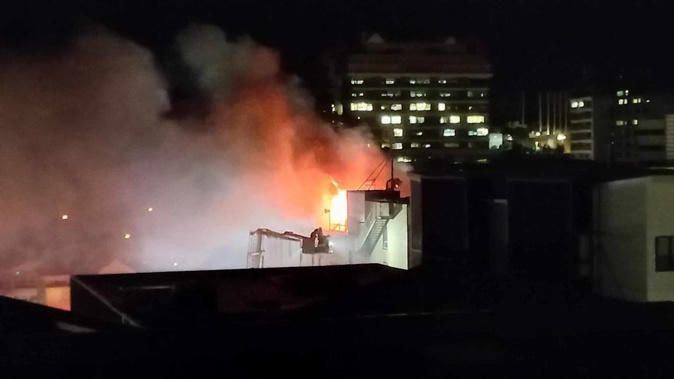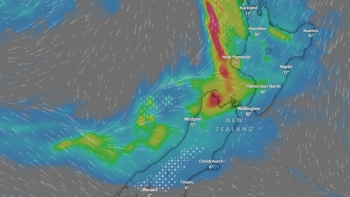
By RNZ
An investigation into boarding houses similar to Loafers Lodge, which burned down last year, has exposed more than 100 problems, including smoke detectors not working and unmonitored alarm systems.
It found a lot of fire and smoke doors meant to block smoke and flames were not up to scratch, and sub-par escape routes and warning systems.
Only half the 37 buildings inspected had smoke detectors installed throughout.
The five deaths at Loafers Lodge in Wellington last May sparked a series of inquiries into fire protections.
One of those, an investigation at the 37 boarding houses nationwide - narrowed down from an initial 70 - found 134 problems.
Some urgent but complex problems had still not been resolved, the Ministry of Business, Innovation and Employment (MBIE) told RNZ.
Fire safety system problems dominated (92) - for instance, only half of the smoke detectors checked were working.
“Many had the battery removed or had dead batteries, or the alarm mechanism had been removed, leaving only the case,” the report said.
The findings, out on Wednesday afternoon, showed 44 cases of inadequate protection for residents from flames and smoke - known as fire separation - such as smokestop doors not working.
- Loafers Lodge fire: Man charged with five counts of murder
- Mourners farewell Loafers Lodge victim Mike the Juggler
- Loafers Lodge fire: Man rescued from roof describes scramble to safety
- Man charged with two counts of arson after fatal hostel fire
“The most common issues with doors were that they were not ‘tagged’ showing their fire and smoke resistance ratings, they had damaged or missing seals or were held open without functioning mechanisms in place to release those doors on activation of the fire alarm.”
Almost 40 problems were to do with escape routes and warning systems not being up to scratch.
“Escape routes were a major concern in some buildings where egress out of the building was obstructed or where the escape route itself was not adequate, safe or structurally sound.”
Of the 37 buildings, 24 had old alarm panels and 13 had newer ones. Half the alarms were not monitored to transmit a signal to the fire brigade or other external centre.
“In one building, the wires to connect to the alarm monitoring company had been cut. Another building is known to repeatedly have their monitoring discontinued as the owner continually failed to pay the monitoring fees.”
Owners sometimes reset the alarm system after a false alarm, but “there is a risk that they render the alarm inoperable, leaving the building and its occupants unprotected”.
MBIE said it had alerted councils to intervene and improve the boarding houses.

A karakia was held at the scene of the Loafers Lodge fatal fire in central Wellington on June 2 last year. Photo / RNZ
“The response has been positive and in many cases the recommendations have already been implemented, and issues resolved,” head of building system, delivery and assurance Simon Thomas said in a statement.
He told RNZ the inquiry set out to find if buildings similar to Loafers posed a fire safety risk.
“All those buildings, despite having a similar profile, they’re all different, the issues present themselves in different ways ... so I’m not in a position to say that, yes, there was a clear fire risk to life in one of those buildings.”
Regarding problems that were still not fixed at some of the boarding houses, he said: “This is a system that relies on building owners and councils and [independent safety system inspectors] being aware of their responsibilities, and, look, the operation has showed that all of those people need to probably improve their performance, and we’re working with all of those people to help them do that.”
But the wider problems were ongoing. “A lack of a consistent definition of a boarding house used by each council and a lack of oversight in relation to the number and location of boarding houses in each region raises concerns for the ability to regulate this sector and ensure the safety and welfare of tenants,” the inquiry report said.
Thomas said they were “continuing to work with the councils on the resolution of these issues. We will continue to highlight deficiencies.”
Local councils identified up to 70 boarding house-style buildings three storeys or higher “with potentially high fire-safety risk” and no sprinklers, like Loafers Lodge. They were not required to have sprinklers. This was cut to 37 by later investigations.
In addition to deficient fire systems, investigators found problems with building warrants of fitness or safety system checklists (called compliance schedules) that were wrong (these show the likes of the alarm system, firedoors, and evacuation routes, which must be regularly checked and okayed).
“In one case, a building had no compliance schedule at all despite the requirement to have one,” the report said.
Seven buildings had different systems than shown on their checklists.
Councils were faulted - some could not tell what was a boarding house and what was not, the inquiry said. And even when they did, they sometimes struggled to access the properties.
Investigators started in Wellington, Queenstown and Auckland, followed by regional visits ranging from Invercargill to Whāngarei.
The ministry’s tenancy compliance team was working with boarding house operators to ensure they were meeting obligations, it said.
Fire and Emergency was still working on its own related investigation.
- RNZ
Take your Radio, Podcasts and Music with you









